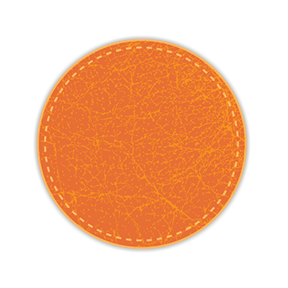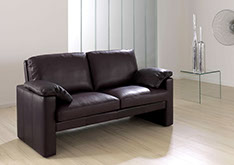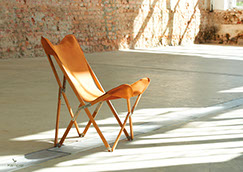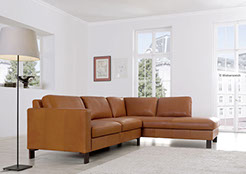


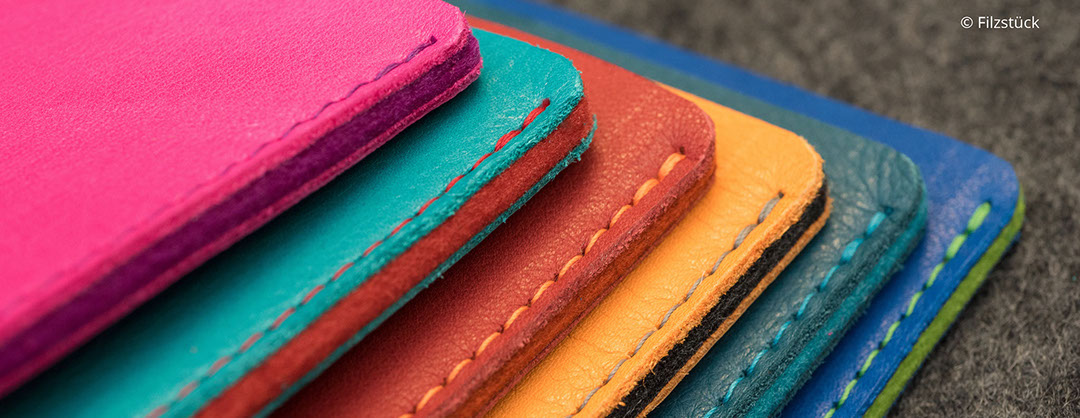
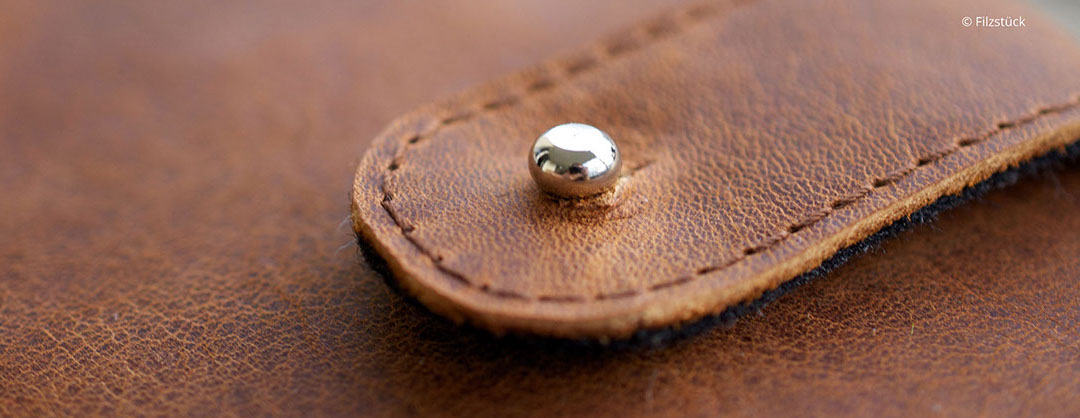
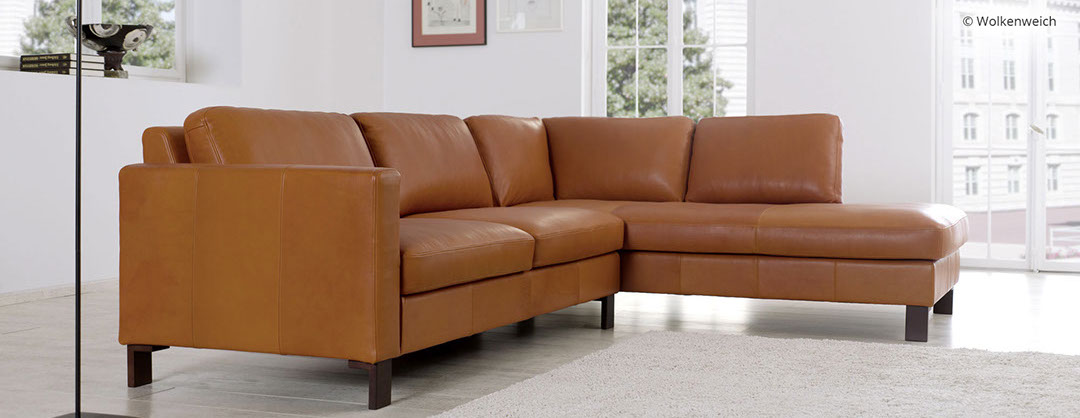
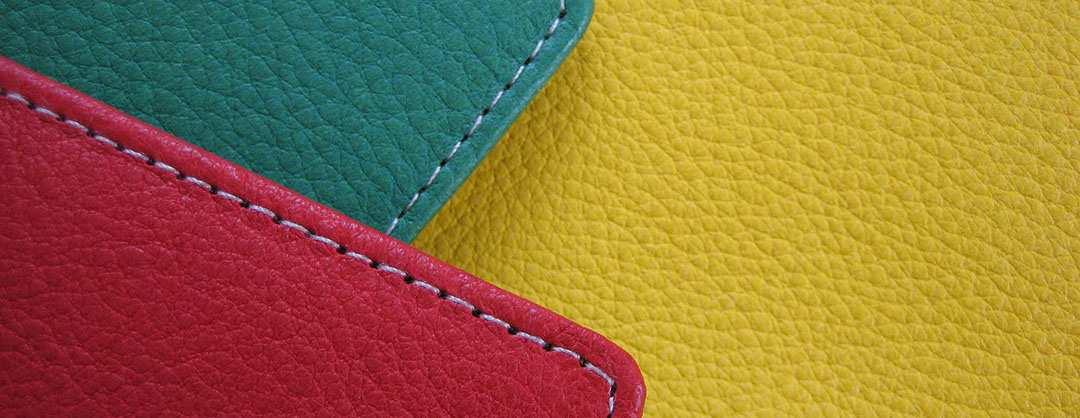
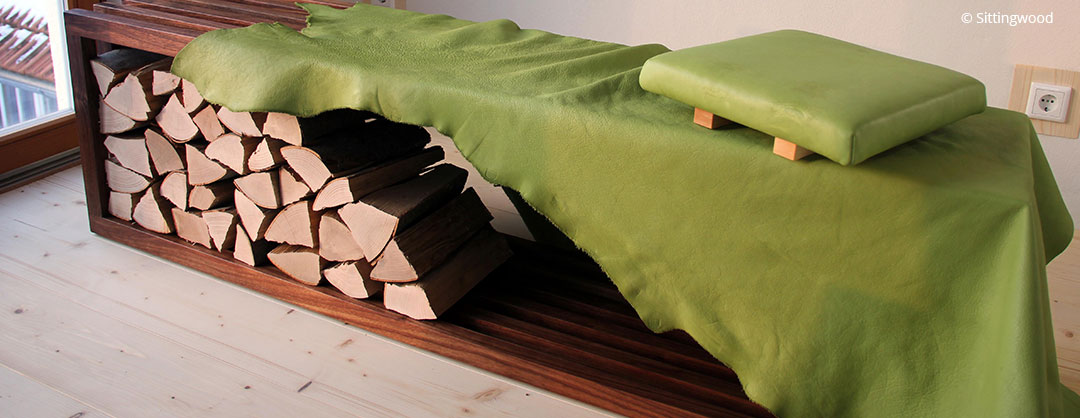
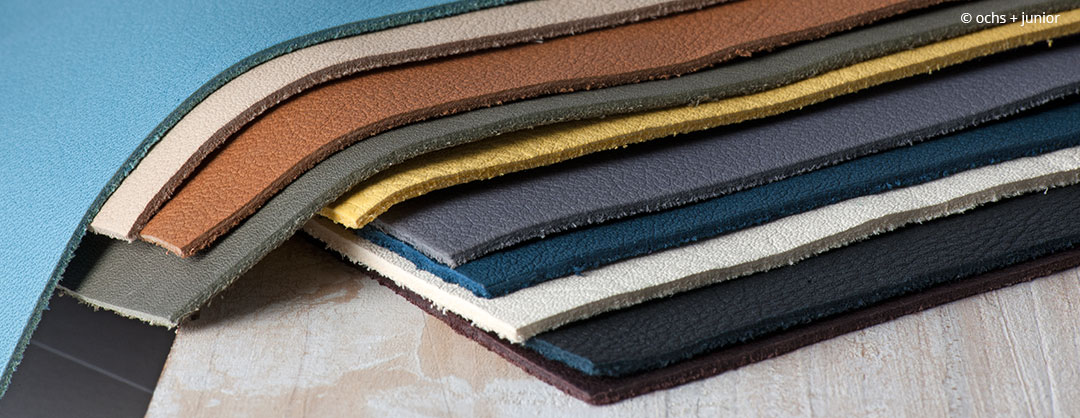

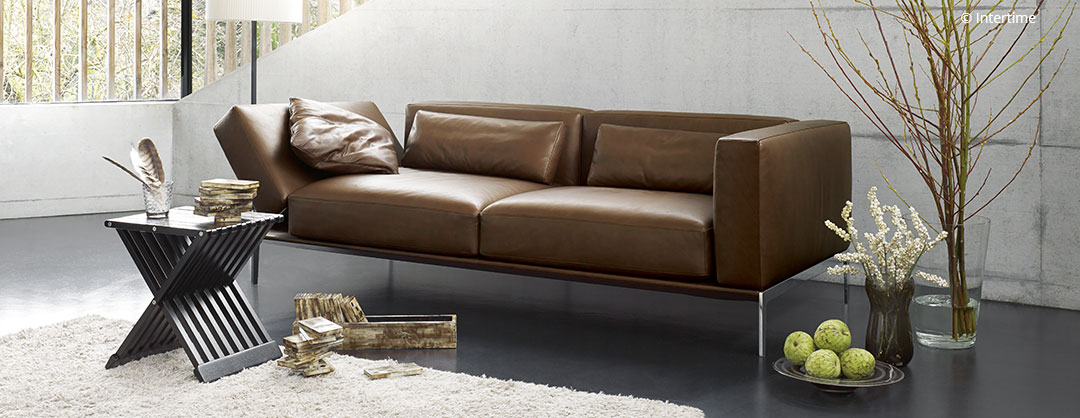
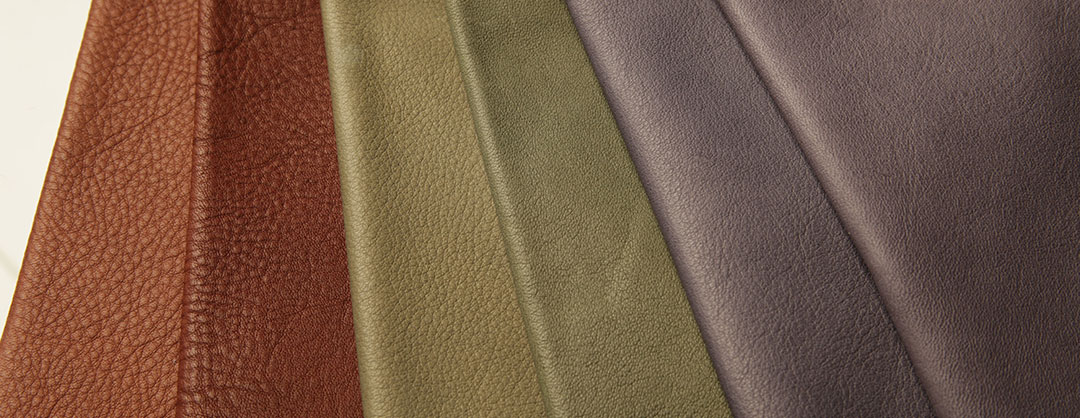
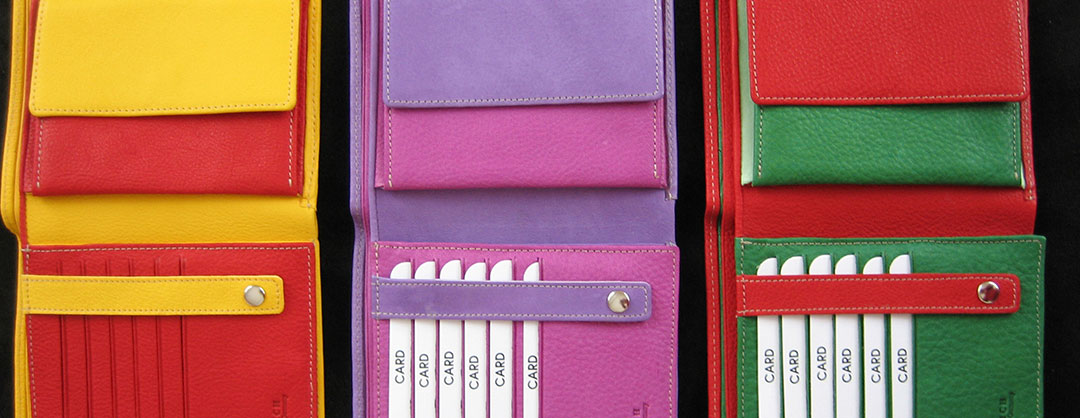
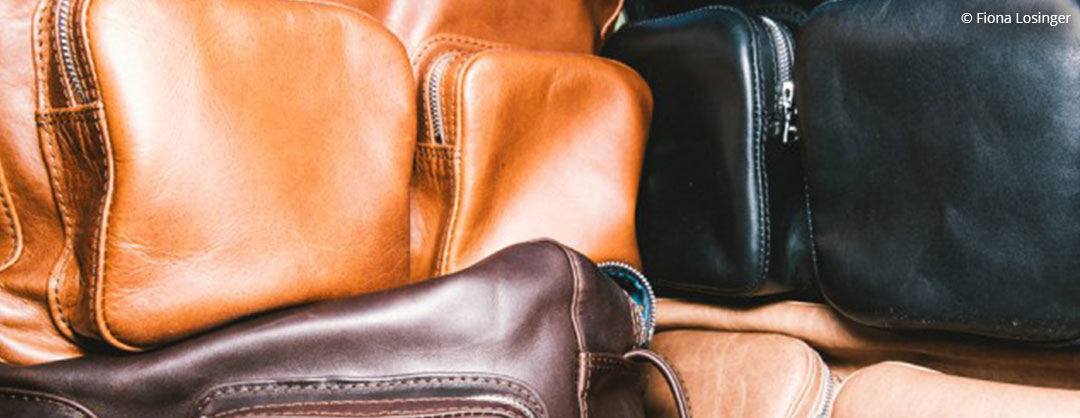
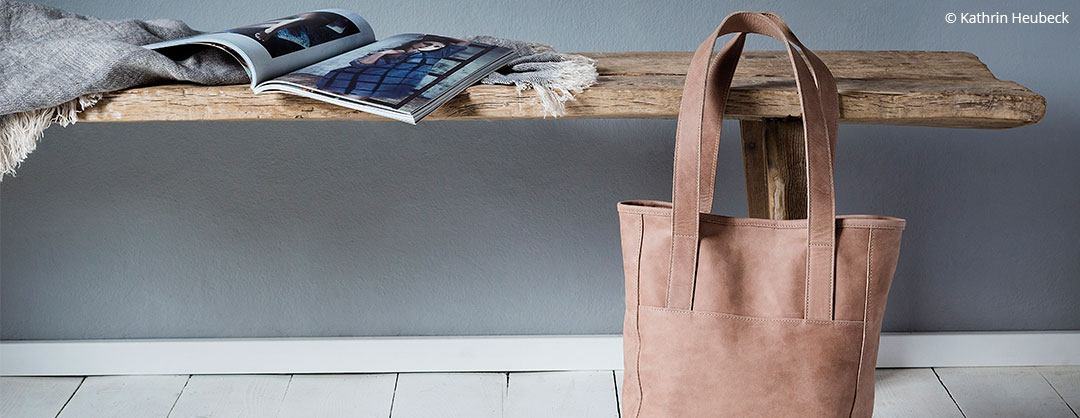



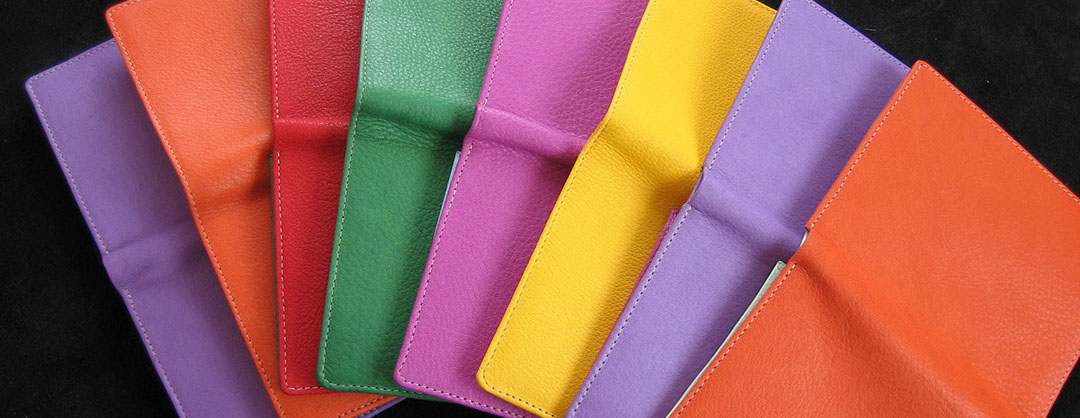

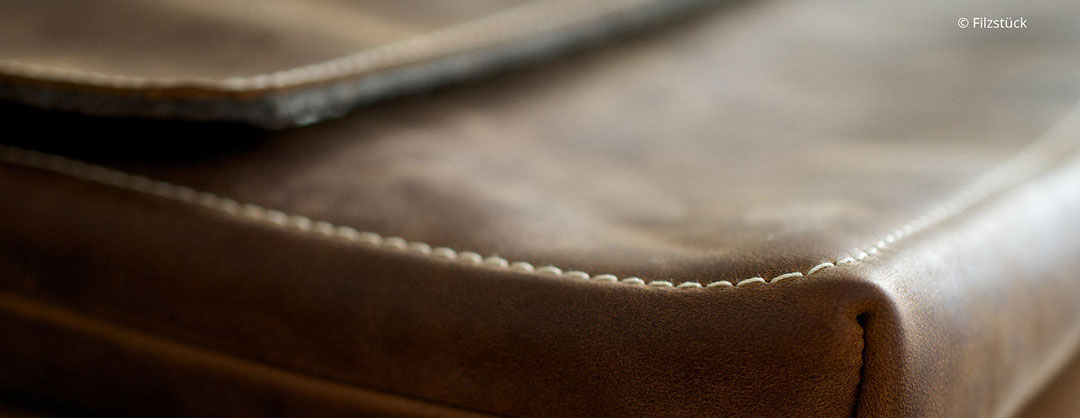
faq...
A fascinating product leather is so complex and manifold that it cannot be portrayed completely. For further questions on “leather” or “Ecopell” please contact us via telephone, mail, fax or e-mail. We are pleased to provide you with whatever information you need. Below you will find some questions frequently asked by our customers.
Questions
1. Why should a leather sofa not be placed in direct sunlight from the south?
The colours in the leather change due to the influence of high-energy solar rays. Depending on the type of tanning and tanning agents used this effect varies: the original colour of the leather darkens or fades.
This is a natural process which can only be avoided with the use of chemical additives on the surface of the leather. For health and ecological reasons however, it is more acceptable not to expose your leather furniture, clothes or shoes to direct sunlight or a strong light source but to place them in the shade.
2. How to care for leather?
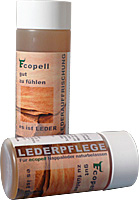
For an optimal effect leather care should be harmonized with the type of leather. Basically leather is distinguished between two types; grain leather and suède leather such as nubuck. Grain leather including natural and pigmented nappas is easily satisfied when it comes to care. It should occasionally be cleaned from dust and loose dirt. This can be done with a soft dry or moist cloth. Depending on the service of the leather, it should be treated with an appropriate conditioner* every 4 to 8 weeks. With natural grain leather it is important to take care that its surface is not damaged by sharp objects (such as metal buttons or rivets). If leather gets wet (e.g. shoes or clothes) it is to be slowly dried in a moderatedly heated, well-aired place.
Do not place on a radiator or stove! Grease the dried leather with a natural-based conditioner afterwards. Schomisch GmbH has developed a range of learther care products especially suited for the demands of these leather types (fully declared and made of natural substances only):
- Ecopell conditioner for untreated Ecopell nappa.
- “Lederzauber” conditioner for nubuck leather and pigmented (dressed) leather.
These conditioners are available wherever Ecopell products are available. Or they can be ordered directly from Schomisch GmbH.
Due to its finished surface nubuck leather is very sensitive to soiling especially through moisture, dirt and liquids. It is recomended to regularly clean the velvety pile from dust and roughen it again using a brush. Surfaces subject to frequent use that have become shiny are carefully ground with very fine emery paper to restore the nubuck look. Do not treat nubuck leather with conditioners, because the leather fibres will stick together and the surface will lose its classical look. For ecological and health reasons we also advise against the use of fluorocarbon based sprays.
3. Why does dry nubuck leather sometimes stain or soil light colured garments, when brought into contact?
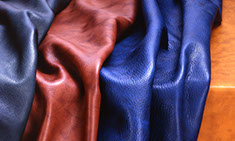
The leather doesn´t actually lose its colour but very fine leather dust is transferred onto the garment. In the production of nubuck leather the surface of the hide is intensively ground to create the velvety pile. Despite frequent subsequent cleaning some dust still sticks to the leather surface. If the leather comes in contact with other rough materials, the leather dust will cover these materials this being more apparent on light-coloured textiles. The dust can be removed by brushing or washing the soiled garment.
4. Where do different colour shades on Ecopell leather result from?
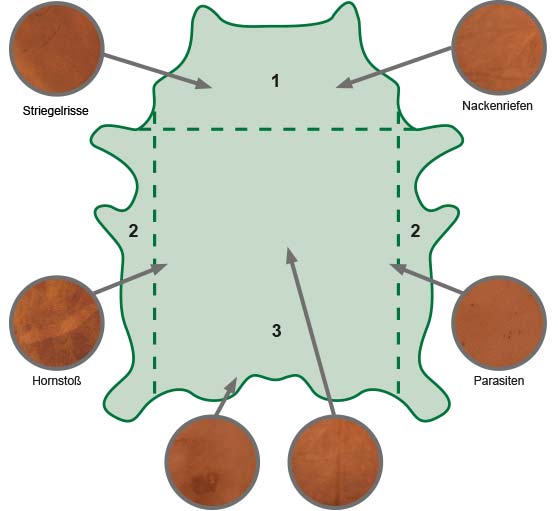
The structure of animal skin varies. The skin fibres are sometimes thicker and sometimes thinner, sometimes their structure is closer and sometimes looser. In the dyeing process the dyes combine with the skin fibres.
The various numbers of dye particles absorbed by them result in differently intensive colours. If the leather surface is untreated as with Ecopell, i.e. not coated with a coloured plastic layer, these shades are visible. They give the leather its vitality and individuality. Each leather is as unique as the animal that the hide originates from.
5. Why should coloured leather furniture not come into direct contact with a freshly wet painted wall?
Wall paints often contain organic solvents to accelerate the drying of the paint. These solvents can dissolve colours out of the leather and transfer them into the painted wall paper. For this process the wall paint does not have to be wet anymore.
The solvents are still active up to two days after drying. A colour strip or spot will then be seen on the wall. The simplest and only way to prevent this is to keep some distance between furniture and wall.
6. Are natural features the same as structural defects in the leather?
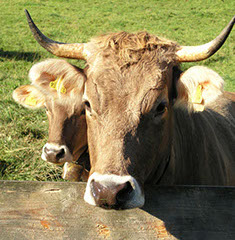
No, they are not. Natural features are not defects but natural appearances on the leathers surface. They originate on the animal and are influenced through the living and keeping conditions of the animal. Physical characteristics of the animals hide (of which the leather is produced) such as traces of ranking battles on the pasture, grains from barbed wire chaps or scratches from thornbushes, insect stings or bites, neck or fattening folds, abrasions caused by the harness the cattle is tied up with in the stable etc.
These simple natural features do not diminish the practical value. Nor are optical effects such as variations in colour or structure resulting from these natural features reasons for complaint. On the contrary, its natural features are what give each hide its wonderful individual charm and make it and the products manufactured from it unique.
7. Which types of leather are particularly suited for furniture?
Upholstered furniture is relatively extensive appointments. Several square meters of leather is used for one item of furniture (10-20 square meters for one sofa). Such a large surface has a correspondingly high influence on its surrounding (the housing and the people living in it). To prevent an adverse effect on the furniture or the living space of the furniture the highest quality standards should be demanded. The climate of a room can affect the leather. The humidity is absorbed by the network of leather fibres and emitted again when the atmosphere is dry, this way the leather balances the atmosphere of the room.
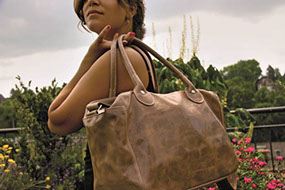
© Fiona Losinger
The leather also draws on the humidity of the human body and the build up of moisture between leather and body surface is prevented. As a prerequisite for this pleasant characteristic the leather has to be left untreated. This means the pores of the leather skin are not closed by a layer of pigments (pigmented leather). Although pigmenting a leather makes it easier to care for, its breathing is restricted substantially.
When in contact with its surroundings a leather can also emit unwelcome substances such as solvents, halogen organic compounds etc. For this reason it is important that pad leather (as well as all other types of leather) does not emit noxious or dangerous substances into the environment. Nor should harmful substances develop from the disposal of the leather after its use. Untreated, vegetable-tanned leather meets all the requirements of pad leather perfectly making living with it a pleasure. Our recommendation when buying leather furniture, ask a specialist dealer for the tanning and provenance of the leather used. One can test if the leather is untreated by depositing a small amount of liquid (water) onto a hidden area, if the water is absorbed the leather is untreated!
8. What are the abrasion values of untreated vegetable-tanned leather?
Todays customers’ concepts and expectations of leather and its characteristics, particularly regarding changes due to light and wear of colour, are determined by the type of leather nowadays primarily sold: Leather sprayed with polyurethane and acrylates, referred to as semianilin and easy-care leather, i.e. the surface is sealed, the leather cannot breath, is cold in winter and hot in summer – these are characteristics that our customers do not wish for.
Not only with furniture, bags, and clothes but also the leather upholstery found in extravagant cars is of a bad quality and not as the car manufacturers would have us believe, a luxury accessory.
Undyed leathers coloured by tanning substances are of an excellent quality especially the light-fastness and the colour abrasion (except natural colour 369 which darkens) and meet the standards set by tanners and leather manufacturers.
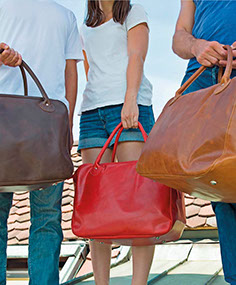
© Fiona Losinger
To obtain colours of the desired light-fastness (step 3) the leather must be dyed thoroughly. Most of the dye accumulates in the upper fine grain layer (nappa) causing the leather to be slightly two-coloured characteristic to the product. Each skin zone within a hide absorbs the dye differently. Consequently abrasion depends on the intensity of the colour, which is characteristic to the product. Otherwise these natural qualities would not be possible. A barell impregnation slightly improves abrasion and the sensitiveness to spots. Natural leather changes through light, time and touch gaining a fascinating patina … connoisseurs appreciate as a mark of genuine leather.
Due to their completely open surface and the abstention from using hard chemicals (such as chrome) dyed Ecopell leathers (especially black and flaming red) hardly reach the values in wet abrasion with water and above all with saliva solution. There are special low abrasion values for the colour black agreed upon between furniture associations and leather industry. Possible abrasion particles on clothes are easy to remove. They disappear through washing with mild detergents. In favour of genuine leather and its wonderful characteristics, this fact cannot be prevented . In order to maintain the unique beauty of Ecopell leather we have to state clearly that these occurences cannot be valued as a reasonfor complaint – but as characteristic for the product.
9. What are natural characteristics and colour variations with untreated leather?
STIFTUNG WARENTEST, the magazine for consumer protection, describes leather of high quality in its guide to the purchase of furniture such as untreated Ecopell: „Leather of high quality is dyed in such a way that the dye encloses every single fibre leaving all natural features visible. Particularly with extensive pieces of furniture you can trace whole lives of cattle:
- Ranking battles
- Parasites
- Injuries obtained in the stable or on the pasture
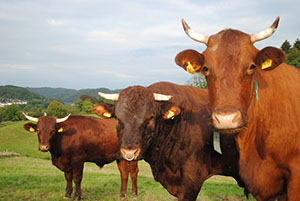
- Chaps caused by thorns and hedges
- Brands (imported leather) and fattening folds can be seen
- In the dying each skin zone absorbs only that much dye the structure of the fibre allows. So there are natural colour variations even within one and the same hide.“
The leather’s features of life strikingly reflect the singularity of each hide and increases the individuality of the products manufactured from it. They do not reduce the practical quality of the leather.
10. What is to be observed with Ecopell intensive colours?

These colours have been developed for our trendiest customers. The listed pastel tints and intensive colours comply with most of our customer’s wishes. Tanned with tara, a vegetable tanning substance, chrome-free and untreated the very soft Ecopell leather caresses many customers’ feet. The colours are synthetical and free from heavy metals. It is to be emphasized that Ecopell is especially non-irritant. If intensive colours were coloured less intensive, colour abrasion would be substantially reduced … but whether these colours would appeal to the customers is quite a different matter.
Synthetically trough impregnated all eight colours are protected inside and outside against slight dirt. To avoid colour abrasion completely we recommend the natural colours 360 beluga white, 361 tara, 363 valonea or 369 bahamas sand. Coloured appliqués on natural leather shoes would be an alternative to accede to wishes for stained shoes.We all know that there is no completely satisfying solution concerning vegetable tanning, untreatedness, abrasion and maximum light-fastness. This could only be reached by using strong chemical substances. Who, however, wants to assume the responsibility towards nature and mankind? (We don’t)
Chrome tanning (threevalent chromium, a heavy metall, also called mineral tanning) involves the potential danger of chromium allergy. In combination with sweat chromium VI can develop, which is 1000 times more toxic than chromium III. Moreover it has to be disposed of permanently. A surface coating made of polyurethane + acrylates results in easy-care + water resistance as well as reduced abrasion … the vapours can cause cancer and change the genetic make-up … the velours side is finished with transparent polyurethane to reduce abrasion. (No breathing, direct contact between skin and polyurethane)
11. What is to say about colour abrasion, light-fastness and the impact of saliva on coloured Ecopell leather?
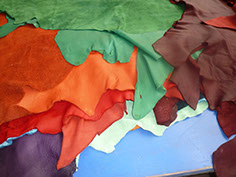
Light pastell tints reach a light-fastness of +/ – 2, i.e. the colours change a bit faster than usuall. With baby shoes and shoes this is within the range of tolerance. Pastell tints usually have a light-fastness of + /- 2. Intensive colours usually have a light-fastness of +/ – 3 on a range from 1 to 6 in the blue scale.
Please note that the colour abrasion of intensive colours is considerably higher. Due to the larger and rougher abrasion surface of its fibres the backside (called flesh or velours side) is subjected to much more abrasion than the nappa side.
Thus in outdoor shoes an internal lining leather is used to avoid the wearer to get coloured stockings. It’s comforting to know that these colours are the most environmentally compatible synthetical colours available at present. More often than not abrasion spots on textiles can be washed out.
Only Ecopell 360 beluga white is resitant to saliva and very resistant to abrasion due to its natural alum special treatment and chrome-free synthetic tanning that cannot be applied to other Ecopell colours.
Light-fastness in comparison, an example:
- Stage 1: fast change of colour withing days.*
- Stage 3: slower change of colour within several months.*
- Stage 6: very slow change of colour within about 2 years.*
* by frequent action of light
Light-fastness values for:
- Shoe leather untreated, usually LF 2-3
- Furniture leather untreated LF 3
As a rule it can be said: Darker colours have a higher light-fastness than lighter dyed leather. All Ecopell leathers are manufactured according to ISO 9001, i. e. each batch is checked for its light-fastness. If desired, you can ask us for the correponding light-fastness.
12. What is “ecological fair mineral tanning”?
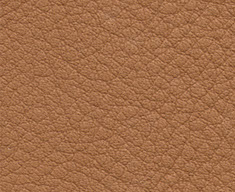
The word mineral tanning is the collective term for any tanning method using minerals and not vegetable tanning. Several salts are known to have a tanning effect on skins. However, only a few were able to become widely accepted. Today, the commonly used mineral tanning agents are alaun (aluminium sulfate and sodium or potassium sulfate), zirconiumate (complex aluminium compounds), titaniumate and chromate. Alaun and white tanning are used rarely for only specific types of leather. Also zirconiumate is used sparse as a tanning agent worldwide. Both tanning minerals are only used for smooth leather, mostly in treating goatskins, sheepskins and calfskin.
The main part of mineral tanned leahters are tanned with chromate (80-90 % of the worldwide production including vegetable tanned leather). Only the trivalent chrome (chrome III) of the two types of the heavy metal chrome can be used as a tanning agent. Yet one can find the hexavalent chrome (Chrome VI), which is toxic and carcinogen, as a contamination in unprofessional produced leather. Chrome III can cause allergies in sensitive persons (children, sick persons and the elderly). Under certain conditions Chrome III can change itself into Chrome VI and be dangerous for people and the environment. These conditions can appear in soil, during combustion and on the human body via sweating.
It is risky to wear (low grade) chrome tanned leather close to the skin. But also the disposal of disused leather goods, leather waste and tannery sewage can cause problems and environmental endangerment when Chrome is used. Caution is necessary, because producers usually take the term mineral tanning as a paraphrase for Chrome tanning. Chrome tanning is neither “ecological fair” nor per se harmless to the human health.
13. What is to make of terms as “PCP free” and “without toxic azo compounds” in leather marketing?
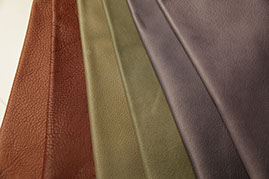
It is illegal to promote that leather products do not contain prohibited pollutents as e.g. PCP, amino acid demerging azo compounds or certain biocides. The law against unfair competition (“UWG”) bans advertisement of implicitness (“Irreführungsverbot” = prohibition of deception (§ 5 UWG)). Through such ads, consumers could wrongly think that one product is better in quality than competing product. Consumer should be careful, because the compliance of legal regulations producing leather and leather goods is not an anomaly, but can be punished by noncompliance in limit values and appliance bans.
Someone could think that with the help of good marketing and the advertisement of implicitness people could oversee problematic substances which the leather contains and are still allowed. Problematic substances still allowed in leather are Chrome tanning agents as well as dye containing heavy metals or cancer causing hydrocarbon connections contained in the surface coating of the leather.
14. How can leather get insensitive to stains and other traces of usage?
Naturally tanned leather alike natural proudced textiles has lower protection against stains, effect of light and scratches. Its surface is breathable due to a multitude of small pores. The leather has a good humidity exchange and is always pleasantly temperated.
Due to lamination of the skin surface through a thin layer of finishing the pores of the skin are closed and can not take any humidity. Through this process natural characteristics of the skin are also covered up. The leather looks flawless and is protected against stains. The addition of pigments (dye) in the surface finish prevents the fading or darkening of colour.
The leather, however, looses its ability to exchange humidity and oxygen, due to the finish. The results are e.g. with shoes made of coated leather increased sweating of the feet. When touching a bolster made of leather it might feel cool at first, but when heat gets involved increased sweat accumaltes between leather and body. Besides the loss of functional comfort, the finishing can cause health problems on account of problematic ingredients used. Frequently used substances are polyurethane, acrylate and butadiene and could be posing a risk to health. Furthermore, the mentioned chemical substances are causing problems in sewage plants when treating waste water and are harming the environment.
15. Why don’t we exclusively use hides from naturally grown animals for Ecopell?
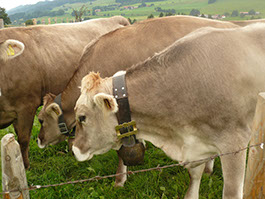
This is partly due to the structure of organic farming and partly a logistic problem. Organic farmers kill only a few animals per year, often in small slaughterhouses (2 to 3 killings a day or a month). The slaughterhouses sell the hides to traders. In order to gather sufficient amounts of hides to deliver to the tanneries, these traders have to cover large distances to buy hides from many organic farmers of one region. Meanwhile the hides must be stored temporarily and strongly salted for preservation. The salt absorbs moisture and prevents putrefactive bacteria from decomposing the hides.
For customer protection the butcher must have a veterinary certificate issued for each raw hide that is sold. With small slaughterhouses the expense per hide is much higher than with big slaughterhouses killing cattle from great live stock of conventional breeding. This expense adds up to the price of the hides, in turn influencing the price of the leather. Although all in all organic and natural cattle breeding is to be prefered for environmental and ethical reasons, the high logistic effort leads to more pollution with exhaust gases caused by many single trips. Moreover, the huge amounts of salt used for preservation present an additional problem in treating the waste water of tanneries.
The raw material for Ecopell leather exclusively originates from and is tanned in Bavaria. Short distances allow the hides to be preserved only with ice cubes, without any additional substances. As a prerequisite at least 250 raw hides must simultaneously be at disposal for processing. Because in industrial leather production the drums must be filled up to a minimum to be operated economically. Smaller production amounts neither would make ecological nor economical sense. The number of customers ready to pay the considerable higher price would be too small. Organically bred cattle is also killed in big slaughterhouses, at a rate of about +- 5 %. For this reason Ecopell leather is also produced of a mixture of hides from conventional as well as natural and/or organic breeding. We, on principle, support organic and/or natural cattle breeding without restriction. As to the origin of raw hides, however, we have to make compromises. Upon considering all factors we have chosen the best possible and least environmentally harmful method for Ecopell.
One solution might be the customer who, in the end, is the one to decide, for example, whether he or she buys or demands for beef from natural bred cattle so that mass breeding will be gradually reduced.
16. Growing cattle and the provenance of Ecopell leather – quality from the start?
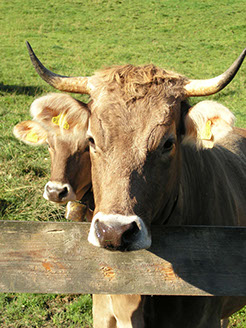
Ecopell is a leather of superior quality. Our customers feel this quality as soon as they hold Ecopell in their hands. They learn about this quality, since we comprehensively inform about the production process and the ingredients and have our leather regulary tested by independent institutes.
We can provide maximum transparency in many areas, since it’s us who are responsible for the production process. On some points we have to rely on our suppliers’ information. This applies for example to the raw hides we use for tanning Ecopell. Striving to guarantee high and proven quality within our means even here, we rely on several components.
For Ecopell we exclusively use hides from the south German region resulting from the slaughter of cattle in the slaughterhouse of the Greater Franconian area. For many years this slaughterhouse has had a modern logistics system at its disposal registering the origin of all cattle slaughtered there.
According to the slaughterhouse about 5 % of all hides processed for Ecopell originate from organic farms. The other hides are to be allocated to conventional farms. In Bavaria 97 % of all agricultural enterprises are operated by families. With an average number of cattle of 53 these farms are rather small as compared to national standards.
Many Bavarian farmers prove the quality of their products as well as the origin of their cattle by participating in the program “open barn door”. Initiated in 1989 the program joins the two separated quality assurance systems “Certified Quality – Bavaria” and “Quality and Safety” to quarantee customers the best food safety possible. For the time being 30.000 farmers take an active part in the program. “Open barn door” represents transparency and adherence to legal quality criteria in animal protection and feeding, among others.
It is determined, for example, that cattle marketed within the program have to be born and raised in Bavaria. In feeding the cattle the quality and ingredients of the fodder are regulated. The haul of the animals between farm and slaughterhouse should be kept as short as possible. Proof is given through regular information by the farmers themselves and through control by a EU licensed certification authority.
We assume that the percentage of organic farms and thus the amount of organically grown cattle will increase in the next few years. Until then we rely on the certified quality of cattle raised on small farms. In addition we refer to question 15: "Why don’t we exclusively use hides from naturally grown animals for Ecopell?"
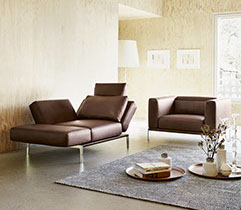

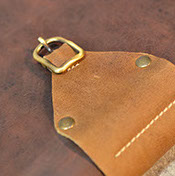
© Filzstück
© Intertime
>> Faq
Data and facts

